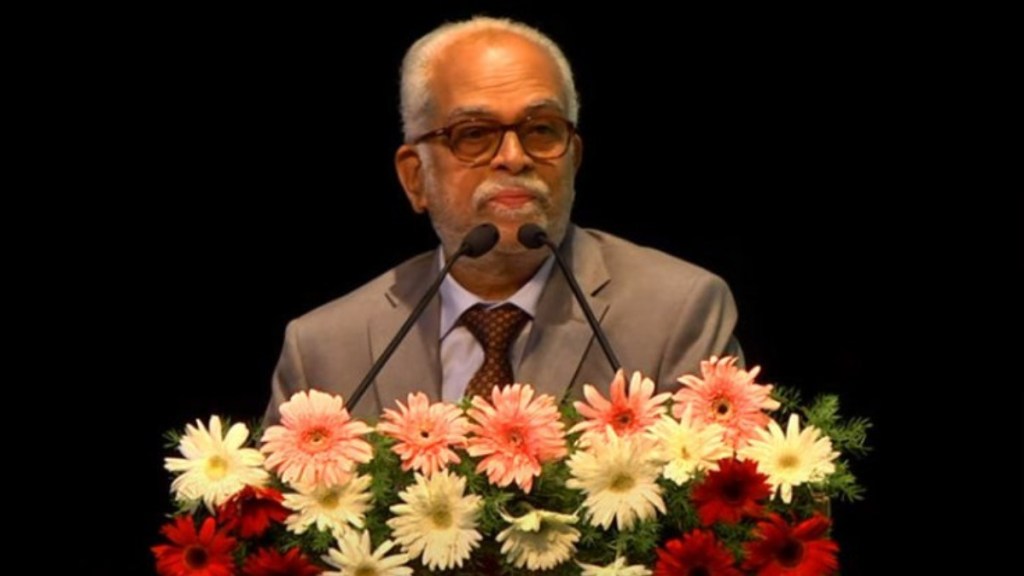Indian lawmakers are set to elect a new Vice President on Tuesday following the abrupt resignation of Jagdeep Dhankhar in late July. The ruling NDA has fielded veteran BJP leader and Maharashtra Governor CP Radhakrishnan for the top post. Meanwhile the Opposition INDIA bloc framed the poll as an ‘ideological battle’ — nominating former Supreme Court judge B Sudershan Reddy for the role.
“This is not a battle; it is a clash of ideas… The other side was propagating that there is a person here who has been a full member of the RSS all his life, so I disagree with that ideology, not with CP Radhakrishnan. There is nothing personal between CP Radhakrishnan and me. We have never even met each other. So I wanted this to be a decent contest, not between individuals but between two different ideologies,” Reddy told ANI recently.
Reddy also said he was “100% sure” of winning the elections — noting that he was “receiving tremendous response” wherever he went. But the election is likely to be mere symbolism as the NDA has the requisite numbers to ensure CP Radhakrishna sails through the contest. The vice presidential election takes place under a secret ballot system, and Members of Parliament are not bound by party whips.
Who is B Sudershan Reddy?
B Sudershan Reddy was born in Andhra Pradesh and studied law at Osmania University before beginning his legal career as a High Court advocate. He was appointed a permanent judge of the Andhra Pradesh High Court in 1995 and later became Chief Justice of the Gauhati High Court in 2005. Justice Reddy was elevated to the apex court in 2007 and remained a vocal champion of civil liberties, and social justice until his retirement in 2011.
The retired Supreme Court judge is known for several key judgements — including the declaration of Salwa Judum as illegal and unconstitutional. The group of trained tribal youth had been deployed as special police officers to take on Naxalites until the two-judge verdict in 2011. Home Minister Amit Shah had criticised the apex court decision last month — contending that it was a setback for anti-Maoism efforts in Chhattisgarh. The Home Minister had sparked outrage from several quarters after claiming that Reddy had “helped Naxalism” with his verdict. Several retired SC judges had also penned a missive to Shah calling the remarks “unfortunate” and insisting that it would be wise of him to refrain from “name calling”.
Reddy also courted controversy earlier this month after meeting with RJD president Lalu Prasad Yadav. A section of legal luminaries alleged on Monday that his “engagement” with convicted individuals spoke volumes about his intentions and allegiances.
“What kind of a Retired Judge of the Supreme Court are you that you are meeting someone who is convicted of a scam? And Lalu Prasad is not even a voter and not a member of parliament, so why are you talking about praising the soul of the nation? This is hypocrisy! Please don’t talk about the soul of the nation,” added former Union Minister and senior BJP leader Ravi Shankar Prasad.
How are the votes stacked?
The electoral college for the vice presidential election comprises a total of 788 members – 245 from the Rajya Sabha and 543 from the Lok Sabha. The 12 nominated members of the Rajya Sabha are also eligible to vote in the election. The present strength of the electoral college is 781 as six seats are vacant in the Rajya Sabha and one in the Lok Sabha. This puts the majority mark at 391. The NDA has 425 MPs, while the opposition camp has the backing of 324. Among the political parties that are not part of the ruling or the opposition camps, the YSRCP, with 11 members in Parliament, has decided to support the NDA nominee, while the BRS and the BJD have decided to abstain from voting in the election. The AIMIM said on Sunday that it had decided to support the opposition candidate in the election.
(With inputs from agencies)

